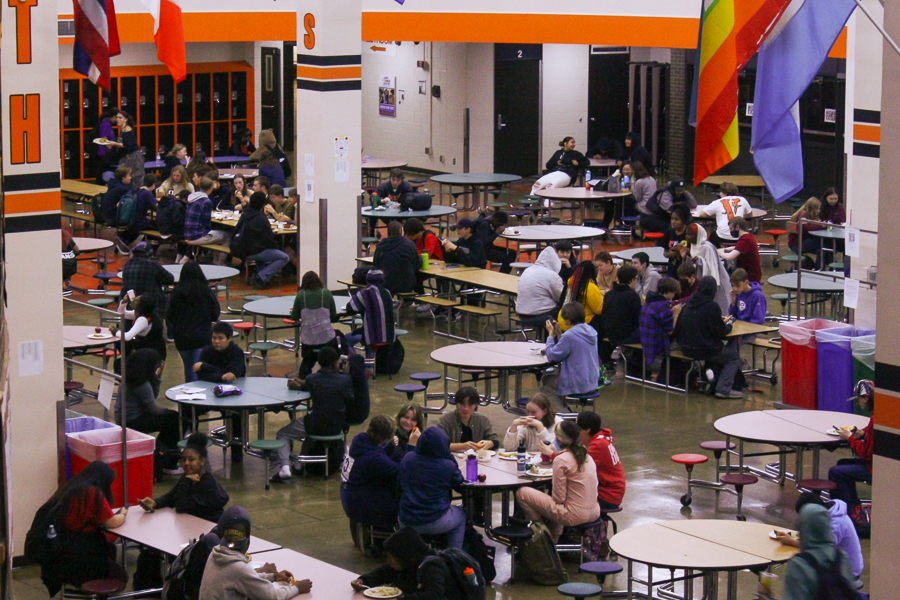A look back on the COVID-19 pandemic and how it will stay with us
South students in the Commons during lunch, most of whom are not wearing masks. This is just one example of how we’re starting to leave behind many aspects of the pandemic. However, some people don’t think that we’ve seen the end of it. “I guess I would say that I wouldn’t be shocked if we had another wave sometime during the school year… I think that’s just going to be how it is,” says South teacher Ms. Lucken Hills.
October 11, 2022
It’s undeniable that the pandemic has irrevocably changed people. When COVID-19 hit the United States in March 2020, schools had to shut down and immediately adapt to distance learning. Now, over 2 years later, we’re back at school in person. Although we’re physically back in the building, does that mean that our lives are back to “normal”?
After the initial return to in-person learning, there were many protocols in place to slow the spread of Covid. Masks were mandated and there were specific procedures for alerting schools of positive cases and timelines for returning to school after being exposed. On April 18, 2022, MPS lifted the district-wide mask mandate and loosened contact tracing/quarantine protocols, citing updates to the Covid framework from the CDC and declining cases and hospitalizations in the city. Both the return to in-person learning and, more recently, the changes to MPS and CDC’s protocols have helped programs affected by Covid to return to how they were pre-pandemic. Band isn’t using coverings for instruments, after school activities have returned, and National Honors Society is operating normally again in terms of Covid precautions.
Band is one of the many programs that were significantly impacted by distance learning. Eddie Cozza, a freshman, says, “It was harder because a lot less people were there. … You couldn’t do it.” Cozza also noted that after the initial transition back to in-person learning, there were “special masks and covers to put on the end of our instruments.” Additionally, other programs such as NHS experienced difficulties. “We didn’t have meetings for a really long time,” says senior Miriam Ljungstrom. “It was definitely less productive and I felt like I wasn’t really making a change in the school, … [which is] the whole reason why NHS exists.” Ljungstrom also added, “It was hard learning online, and I felt like the content was changed a lot because of [it].”
While we are starting to leave behind many aspects of the pandemic and distance learning, there are still many ways that our current lives are affected by it. “The dependency on electronics … has definitely made teaching different,” says Ms. Lucken Hills, one of South’s 9th grade ELA teachers. “Unless something is on an electronic [device], a lot of students don’t feel like it’s worthwhile.” In addition to learning-related effects, Hills also adds, “I try to not get as close to people as I used to… I also find myself asking people straight-up, ‘are you vaccinated?’ … and I’m really quick to let other people know that I’m vaccinated.”
An important question that many people are asking themselves is: how far are we through the pandemic? Both Cozza and Ljungstrom think the worst of the pandemic is over. “A lot of people are vaccinated now, there’s boosters coming out, … [and] less people are being hospitalized,” Cozza noted. However, Ms. Hills isn’t so sure. “I guess I would say that I wouldn’t be shocked if we had another wave sometime during the school year… I think that’s just going to be how it is.” She also added that “not everybody is willing to get a second booster, or [even a] first booster for that matter.”






